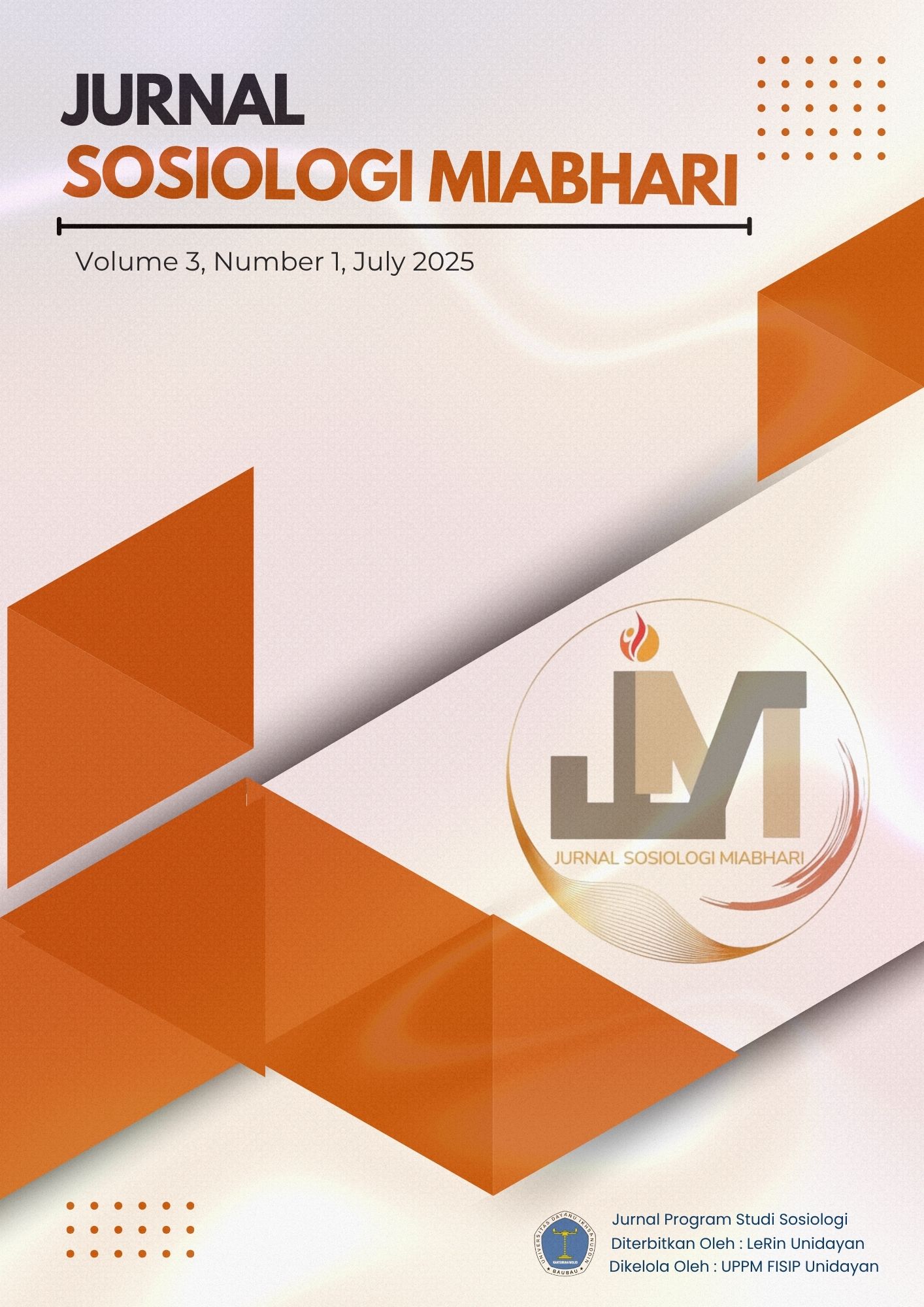Peran Anggota Dewan Perempuan Periode 2019-2024 Dalam Fungsi Legislasi Di DPRD Kabupaten Buton
DOI:
https://doi.org/10.55340/jsm.v3i1.1928Keywords:
Female Council, Legislative Function, Political RepresentationAbstract
This study aims to analyze the role of female members of the Buton Regency Regional People’s Representative Council (DPRD) for the 2019–2024 period in carrying out their legislative functions, as well as to identify the constraints they encounter. Employing a qualitative approach with purposive sampling techniques, data were collected through in-depth interviews with female council members, male council members, community leaders, and through documentary research. The analysis was conducted through the stages of data reduction, data presentation, and conclusion drawing. The findings reveal that women’s representation in the Buton Regency DPRD possesses considerable descriptive and symbolic significance, as evidenced by the presence of 24% female members, including a female council chair, which influences public perceptions positively and motivates greater political participation among women. Nevertheless, their substantive contribution to legislative work remains limited, as indicated by the underutilization of the right of initiative to propose gender-responsive local regulations, the low frequency of public dissemination of enacted regulations, and technical constraints such as limited budgetary resources. The primary obstacles include the low proportion of female representation, the dominance of infrastructure-related agendas promoted by male members, and the lack of training and institutional support for gender-responsive legislative capacity. These findings reinforce the view that gender-affirmative policies are insufficient if focused solely on numerical quotas and must be complemented by capacity building, structural support, and political networking. Consequently, the effectiveness of women’s roles in the Buton Regency DPRD will largely depend on the extent to which capacity enhancement and institutional reinforcement can be implemented in future terms—an issue that remains both a challenge and an opportunity for further sociopolitical inquiry.
Downloads
References
Adhi Pratama, R., Ika Faudina, R., Arif Triyoga, M., Aoera Dievana, K., Rizky Irawan, M., & Aldi Tursandi, S. (2024). Tantangan Dan Efektivitas Implementasi Pemenuhan 30% Kursi Perempuan Di DPR. Desember, 12, 415–419. https://doi.org/10.59435/gjmi.v2i12.937
Dahlerup, D. (2007). Electoral gender quotas: Between equality of opportunity and equality of result. Representation, 43(2), 73–92.
Dolan, J., Deckman, M. M., & Swers, M. L. (2021). Women and politics: Paths to power and political influence. Bloomsbury Publishing PLC.
Hasni. (2024). Wawancara Narasumber : Wa Ode Nurnia (Ketua DPRD Kabupaten Buton 2019-2024).
Hasni. (2024a). Wawancara Narasumber : Hasili (tokoh masyarakat).
Hasni. (2024b). Wawancara Narasumber : La Subu (Anggota DPRD Kab. Buton 2019-2024 dari PKS).
Hasni. (2024c). Wawancara Narasumber : Lurah Watomotobe, Taheruddin.
Hasni. (2024d). Wawancara Narasumber : Nur Yaqin (Anggota DPRD Kab. Buton 2019-2024 Partai PKB).
Hasni. (2024e). Wawancara Narasumber : Rahman (Anggota DPRD Kab. Buton 2019-2024 Partai PPP ).
Hasni. (2024f). Wawancara Narasumber : Sufiani, S.P. (Anggota DPRD Kab. Buton 2019-2024 Partai Demokrat).
Hessami, Z., & da Fonseca, M. L. (2020). Female political representation and substantive effects on policies: A literature review. European Journal of Political Economy, 63, 101896.
indonesiabaik.id. (2024). Pelan-Pelan, Keterwakilan Perempuan dalam Politik Terus Meningkat. Pelan-Pelan, Keterwakilan Perempuan Dalam Politik Terus Meningkat.
Julianti Haryanto, T., Alycia Yahya, A., & Sekar Prastin, I. (2023). Peningkatan Keterwakilan Perempuan di Parlemen: Studi Kasus Kebijakan Partai Politik Dalam Mendorong Keterlibatan Perempuan. Triwikrama: Jurnal Multidisiplin Ilmu Sosial, 6.
jurnalmasyarakat. (2024, May 2). KPU Tetapkan 25 Anggota DPRD Buton Terpilih Hasil Pemilu 2024. Https://Jurnalmasyarakat.Com/Kpu-Tetapkan-25-Anggota-Dprd-Buton-Terpilih-Hasil-Pemilu-2024-Ini-Nama-Namanya/.
Mervis, Z., Box, M., Pleasant, M., Eve, N., Florence, M., & Caroline, M. (2013). The relationship between democracy and women participation in politics. Journal of Public Administration and Governance, 3(1), 168–176.
Miles, B. M., & Huberman, M. (2001). Analisis Data Kualitatif : Buku Sumber Tentang Metode-Metode Baru (T. Rohadi, Ed.). UI Press.
Mlambo, C., & Kapingura, F. (2019). Factors influencing women political participation: The case of the SADC region. Cogent Social Sciences, 5(1), 1681048.
Soekanto, S. (2007). Sosiologi: Suatu Pengantar. PT Grafindo Persada.
Tadros, M. (2014). Women in politics: Gender, power and development. Bloomsbury Publishing.
Tias, R. N., Nisrina, A. D., Destriputra, N., Al Putra, F. A., & Prakoso, S. G. (2023). Tantangan Kebijakan Affirmative Action Sebagai Upaya Penguatan Keterwakilan Perempuan di Legislatif [Challenges of Affirmative Action as An Effort to Strengthen Women’s Representation in The Legislature]. Jurnal Politica Dinamika Masalah Politik Dalam Negeri Dan Hubungan Internasional, 14(2), 169–189.
Undang-Undang (UU) Nomor 7 Tahun 2017 Tentang Pemilihan Umum.
Undang-undang (UU) Nomor 8 Tahun 2012 tentang Pemilihan Umum Anggota Dewan Perwakilan Rakyat, Dewan Perwakilan Daerah, dan Dewan Perwakilan Rakyat Daerah. (n.d.).
Undang-undang (UU) Nomor 10 Tahun 2008 tentang Pemilihan Umum Anggota Dewan Perwakilan Rakyat, Dewan Perwakilan Daerah, dan Dewan Perwakilan Rakyat Daerah. (n.d.).
Undang-Undang (UU) Nomor 12 Tahun 2003 Tentang Pemilihan Umum Anggota Dewan Perwakilan Rakyat, Dewan Perwakilan Daerah, Dan Dewan Perwakilan Rakyat Daerah.









